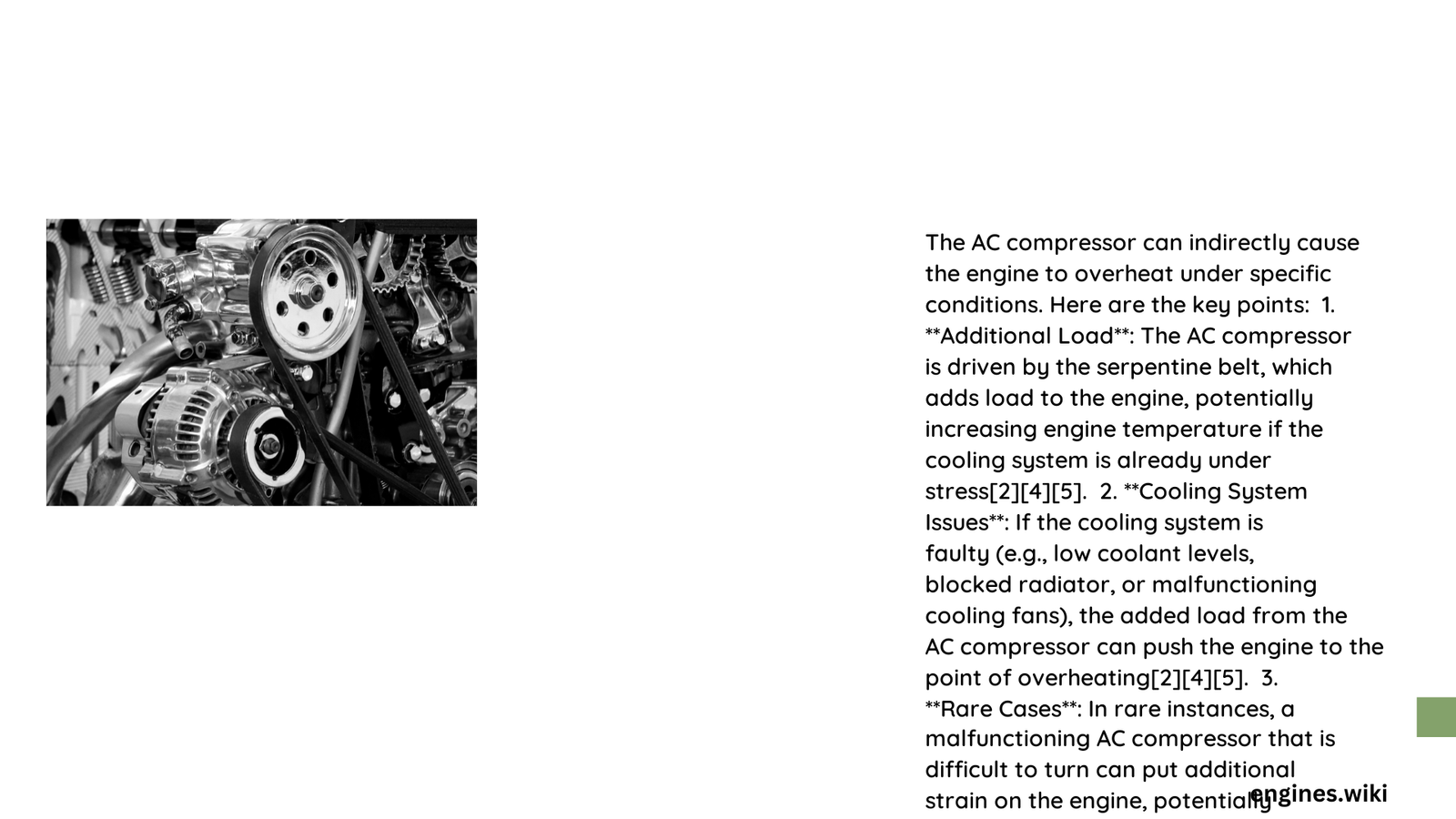Modern vehicle owners often wonder about the intricate relationship between their air conditioning system and engine temperature. The AC compressor, a critical component of your vehicle’s cooling mechanism, can indeed contribute to engine overheating under specific circumstances. Understanding these complex interactions requires a deep dive into automotive thermal dynamics, mechanical load distribution, and systemic performance indicators.
What Causes AC Compressor to Stress Engine Performance?
Vehicle engines operate within delicate thermal balance, and the AC compressor plays a significant role in disrupting this equilibrium. When activated, the compressor generates additional mechanical load, forcing the engine to work harder and potentially increasing overall temperature.
How Does AC Compressor Add Extra Load to Engine?
The AC compressor connects directly to the engine’s serpentine belt, drawing mechanical energy to compress refrigerant. This process creates substantial resistance, which translates into:
- Increased Rotational Resistance: Compressor engagement requires more engine power
- Heat Generation: Mechanical compression produces significant thermal energy
- Accessory System Strain: Simultaneous operation of multiple engine accessories
| Performance Indicator | Normal Range | Potential Overheating Range |
|---|---|---|
| Engine Temperature | 195-220°F | 220-250°F |
| Coolant Pressure | 13-16 PSI | >18 PSI |
| AC Compressor Load | 10-15% | >20% |
What Mechanical Factors Contribute to Potential Overheating?
Several interconnected mechanical factors can transform an AC compressor from a comfort feature to a potential thermal stress point:
- Belt Tension Dynamics
- Loose serpentine belt reduces efficient power transmission
- Excessive belt wear increases mechanical friction
-
Improper belt alignment creates uneven load distribution
-
Cooling System Limitations
- Radiator blockages restrict heat dissipation
- Inefficient water pump circulation
- Compromised coolant quality
Can Refrigerant Pressure Impact Engine Temperature?
Refrigerant system pressure plays a crucial role in thermal management. High-pressure conditions within the AC system can:
- Increase compressor workload
- Generate additional heat through compression
- Create back-pressure in the cooling system
What Diagnostic Steps Reveal AC Compressor Issues?
Comprehensive diagnostic approaches include:
- Temperature Monitoring
- Track engine temperature during AC operation
- Use professional diagnostic tools
-
Compare temperature variations
-
Physical Inspection
- Check compressor clutch engagement
- Examine serpentine belt condition
- Verify refrigerant system pressure
How Preventive Maintenance Mitigates Risks?
Regular maintenance prevents potential overheating scenarios:
- Annual cooling system flush
- Serpentine belt replacement every 60,000-90,000 miles
- Professional AC system pressure testing
- Coolant level and quality verification
Technical Recommendations

Vehicle owners should:
– Address minor cooling system issues promptly
– Use high-quality coolant
– Maintain proper refrigerant levels
– Schedule regular professional inspections
Pro Tip: Modern vehicles with advanced thermal management systems are less susceptible to AC-induced overheating, but vigilance remains crucial.
References:
– SAE Technical Paper on Automotive Thermal Management
– ASE Certified Mechanics Cooling System Guidelines
– Society of Automotive Engineers Thermal Performance Research
